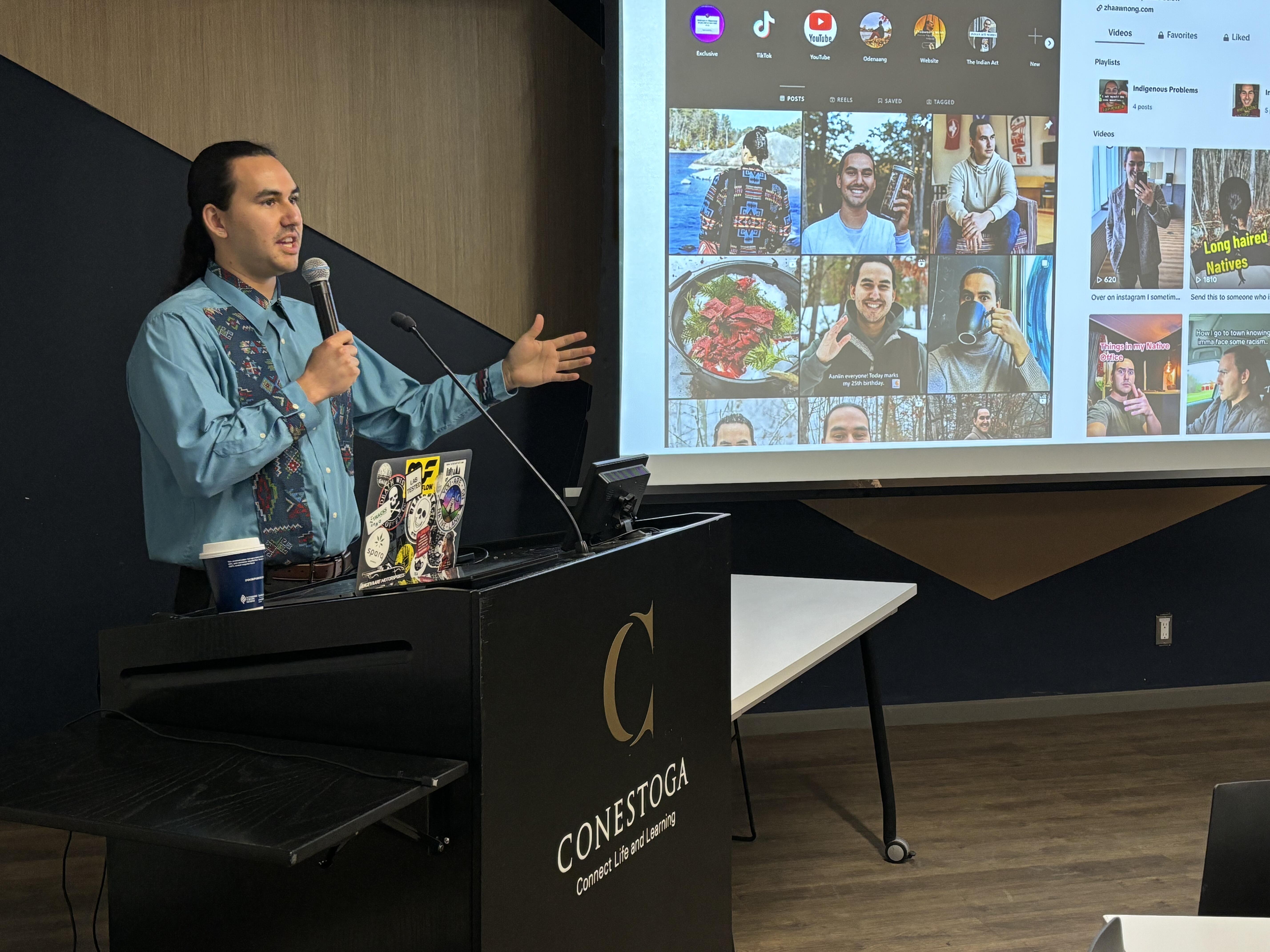The first Indigenous Education Symposium was held at Conestoga to share information about Indigenous approaches to education, using culture and experiential learning opportunities to encourage college employees to think about how they can integrate those unique perspectives into classrooms.

Social media influencer and university student Zhaawnong Webb spoke at Conestoga's first Indigenous Education Symposium.
The symposium hosted by Indigenous Initiatives, in partnership with Program Planning and Pathways and Teaching and Learning, was held at the Kitchener - Doon campus from April 30 to May 1.
“This symposium is a wonderful example of putting words into action,” said Danielle Boissoneau, director of Indigenous Initiatives and Services.
Workshops and speakers included two young Indigenous scholars who shared their post-secondary experiences and how that education differed from the teaching and learning that happens in their communities.
The first day’s keynote speaker was Zhaawnong Webb, a social media influencer sharing information about Indigenous culture on various channels. Webb grew up connected with his Anishinaabe culture in the Kawartha Nishinawbe community in Burleigh Falls, Ontario, and is now pursuing a university education in Indigenous studies.
“We believe that you are the conductor of your own learning, and learning should be lifelong and take it slow,” Webb said. The same should be true for teachers: “Being an educator also means being a learner.”
The lifelong pursuit of expanding knowledge and understanding is fundamental among the Anishinaabe, and elders will insist they’re not elders, but rather still learners.
Storytelling is fundamental to education in Anishinaabek culture. However, according to Webb, that can lead to challenges within a Western post-secondary institution. Webb talked about how his approach to writing a paper reflects his way of learning and sharing knowledge through storytelling and personal reflections, but not all teachers may be prepared for another way a student demonstrates what they’ve learned.
“The best thing you can do is just be open to these different approaches,” Webb said.
The second day’s keynote speaker was Makasa Looking Horse, who is Mohawk and Lakota from Six Nations of the Grand River. Attending university was challenging because she felt like all the Indigenous knowledge she learned going through the rites of passage for both groups was not viewed as valuable.
“I didn’t know how to feel value in that kind of institution,” Looking Horse said. “I had to learn a whole new language and manoeuvre through the education system.”
Balancing school with her commitment to her community and activism around water protection wasn’t easy and her non-Indigenous instructors weren’t always willing to grant accommodations when needed, such as when she was a member of the global youth caucus at the United Nations Climate Summit.
“It wasn’t an easy journey,” Looking Horse said. However, she persevered because she knew the skills being learned at university would help her community.
The symposium also touched on the college’s focus on expanding supports and services for educators to incorporate Indigenous knowledge into their teaching practices. The conversations are ongoing, with the gathering a good start on relationship building to find ways together.
Conestoga is committed to increasing Indigenous learners’ access to and success in post-secondary education and closing the participation and achievement gap. The college's response to the Truth and Reconciliation Commission of Canada's Calls to Action continues through ongoing emphasis on improving education and attainment levels and success rates of Indigenous learners.
Developing culturally appropriate curricula, including the teaching of Indigenous languages, as well as offering a range of programming, services and research opportunities that promote Indigenous ways of knowing and reconciliation remain a priority.
To learn more and access resources, visit Indigenous Initiatives.
